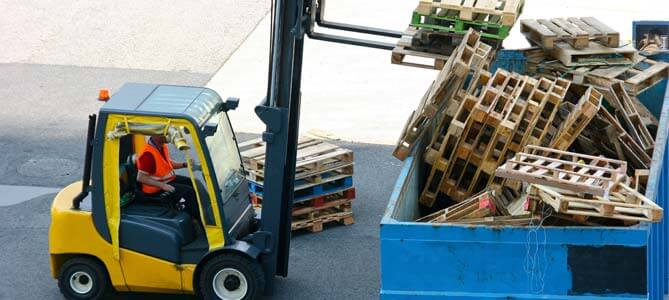
Pallets. They’re literally everywhere. Did you know that there are about two million pallets in circulation around the globe? And that only two-thirds of pallets are used just once. In the U.S. alone, about 4 billion board feet of wood pallets are thrown away every year, according to sustainability firm, Jetson Green.
While that is a tremendous waste, there is a huge movement toward reusing and recycling pallets. Innovators are turning unusable pallets into items such as compost bins, lawn furniture, and even small buildings.
Other pallet recycling companies will take unusable pallets, break them down, and build new pallets from the materials. Older pallets that are extremely damaged are crushed and turned into wooden mulch. The mulch is used as playground material, landscaping material, and in other applications.
To manufacture mulch, pallets are collected and then placed in a series of grinding steps. The multi-step grinding ensures that the pallet material is turned into the proper texture. In-between grinding steps, the mulch passes along a series of conveyor belts. During this stage of the process, crossbelt magnets separate nails from the wood, ensuring that the end product is safe for popular uses. Here’s video of a pallet grinder in operation:
Another advantage to recycling pallets is the revenue savings. Companies that reuse or recycle pallets avoid paying landfill fees, and potentially receive monetary compensation for the recyclable materials.







